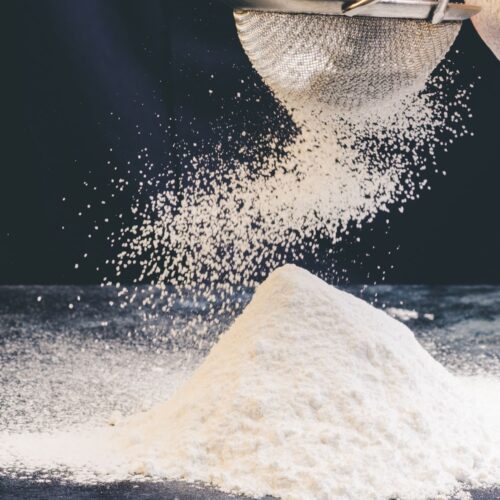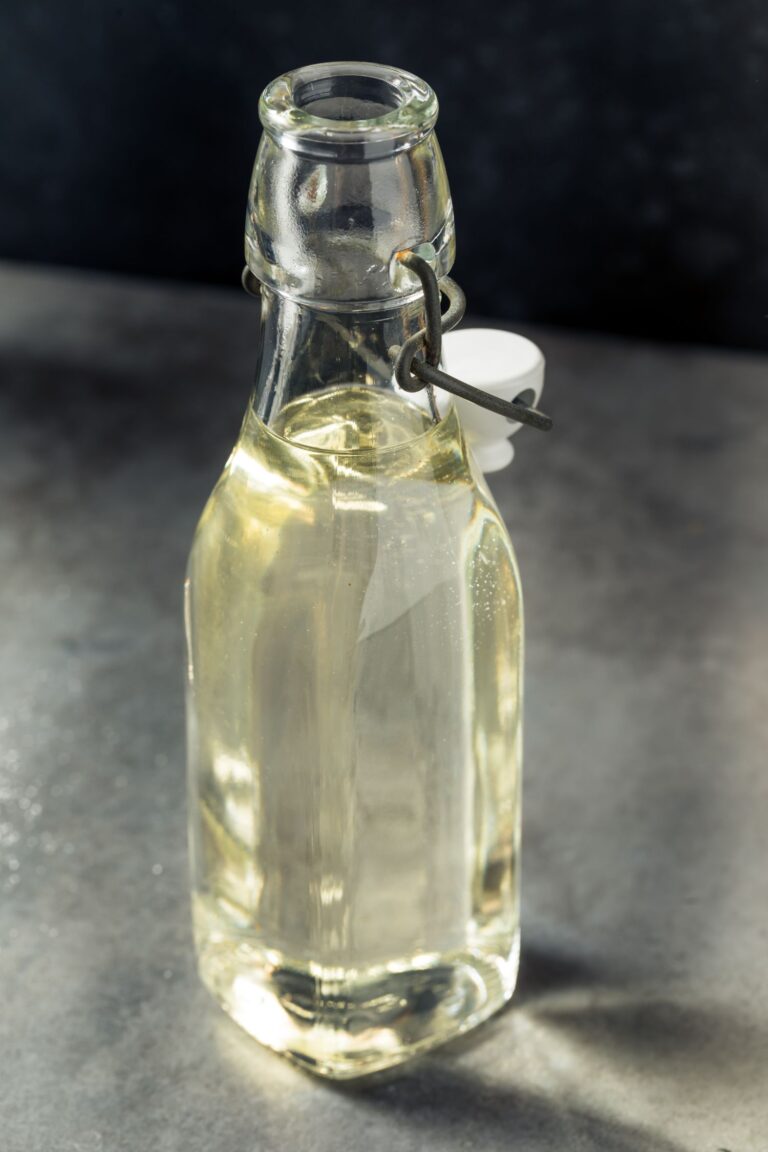The Secret to Soft, Fluffy Cakes: Homemade Cake Flour Recipe
Baking cakes from scratch can be a rewarding and satisfying experience, but achieving the perfect texture can be a challenge. One key ingredient that can make all the difference is cake flour. Commercial cake flour is specially formulated to create the light, tender crumb that makes cakes so irresistible. However, if you don’t have access to cake flour or want to save some money, you can easily make your own at home with just a few simple ingredients.
In this post, we’ll dive into the science behind cake flour and share a simple homemade recipe that will transform your cakes from dense and heavy to soft, fluffy, and melt-in-your-mouth delicious. Whether you’re baking a classic vanilla cake, decadent chocolate layer cake, or any other type of homemade cake, this homemade cake flour will take your baking to new heights. Let’s get started!
Bite-Sized Beats
What is Cake Flour?
Cake flour is a finely-milled, low-protein flour that is specifically designed for baking cakes and other delicate baked goods. It typically contains around 8-10% protein, which is lower than all-purpose flour (10-12% protein) and bread flour (12-14% protein).
The lower protein content of cake flour results in less gluten formation during mixing and baking. Gluten is the network of proteins that gives bread its chewy, elastic texture. But in cakes, too much gluten can lead to a tough, dense crumb. Cake flour’s reduced gluten-forming potential produces a soft, tender, and light cake texture.
In addition to the lower protein, cake flour is also ground to a finer consistency than all-purpose flour. This finer grind helps create a silkier, more velvety mouthfeel in cakes. The small starch granules also absorb more liquid, resulting in a moister cake.
Why Use Homemade Cake Flour?
While you can certainly purchase commercial cake flour at the grocery store, there are several benefits to making your own at home:
- Cost savings: Homemade cake flour is significantly cheaper than buying pre-packaged cake flour, especially if you bake cakes frequently.
- Customization: By making your own, you can tailor the flour to your specific baking needs. For example, you may want to use a different ratio of all-purpose to cornstarch depending on the type of cake you’re making.
- Freshness: Homemade cake flour is always fresh, whereas store-bought can sit on shelves for who knows how long.
- Convenience: It only takes a minute to whip up a batch of homemade cake flour, so you can make it right when you need it for a recipe.
- Accessibility: If you live in an area where cake flour is hard to find, making your own is a great solution.
So in summary, homemade cake flour allows you to save money, customize your baking, and ensure you always have a fresh, high-quality flour on hand. Let’s dive into the recipe!
Homemade Cake Flour Recipe
Here’s a simple recipe for making your own cake flour at home:
Ingredients:
- 1 cup (120g) all-purpose flour
- 2 tablespoons (15g) cornstarch
Instructions:
- Measure out 1 cup of all-purpose flour and remove 2 tablespoons of the flour.
- Add 2 tablespoons of cornstarch to the remaining flour and whisk together until well combined.
- Sift the flour-cornstarch mixture 2-3 times to fully incorporate the cornstarch and aerate the flour.
- Use the homemade cake flour in your favorite cake recipes, substituting it 1:1 for store-bought cake flour.
That’s it! This simple two-ingredient method transforms regular all-purpose flour into a fine, low-protein cake flour that will give your cakes a wonderfully soft and tender texture.
How to Use Homemade Cake Flour
Homemade cake flour can be used just like commercial cake flour in any recipe that calls for it. Simply substitute it 1:1 for the cake flour in the recipe. Here are a few tips for getting the best results:
- Sift, sift, sift: Be sure to sift the flour-cornstarch mixture 2-3 times before using. This helps fully incorporate the cornstarch and aerates the flour for a lighter texture.
- Measure accurately: Cake flour is very light and fluffy, so be sure to use the spoon-and-level method when measuring to get the right amount. Packing down the flour can lead to dense, heavy cakes.
- Don’t overmix: As we mentioned, the lower protein content of cake flour means less gluten development is desired. Overmixing can still toughen the batter, so be gentle when mixing your cake batter.
- Adjust liquid as needed: Homemade cake flour may absorb slightly more or less liquid than store-bought. Keep an eye on your batter consistency and add a tablespoon or two of milk/water if it seems too thick.
- Use for delicate cakes: Homemade cake flour shines in light, airy cakes like angel food, chiffon, and sponge cakes. It also works great for cupcakes, muffins, and quick breads.
With these tips in mind, let’s take a look at a few classic cake recipes that are perfect for using homemade cake flour:
Vanilla Cake
A light, tender vanilla cake is the perfect canvas for all sorts of frostings, fillings, and toppings. Homemade cake flour gives this classic cake an incredibly soft, fine crumb.
Chocolate Cake
Rich, decadent chocolate cake also benefits from the fine, delicate texture of cake flour. The reduced gluten allows the chocolate flavor to really shine through.
Red Velvet Cake
The classic red velvet cake gets its signature velvety texture from a combination of cake flour, buttermilk, and cocoa powder. Homemade cake flour is a must for this recipe.
Lemon Cake
Bright, tangy lemon cakes pair beautifully with the soft, airy crumb that homemade cake flour provides. The fine texture allows the citrus flavor to really pop.
Angel Food Cake
This iconic light-as-air cake absolutely requires the use of cake flour. The low protein content and fine grind are essential for achieving that signature fluffy, cloud-like texture.
No matter what type of cake you’re baking, homemade cake flour is sure to take your creations to the next level. Its soft, tender texture will have your family and friends raving about your baking skills.
Tips for Baking with Homemade Cake Flour
In addition to the tips mentioned earlier, here are a few more pointers for getting the best results when baking with homemade cake flour:
- Sift before measuring: Always sift the flour-cornstarch mixture before measuring out the amount needed for your recipe. This ensures an accurate, aerated measurement.
- Don’t over-cream the batter: When creaming the butter and sugar, be careful not to overbeat. This can develop too much gluten and toughen the cake. Cream just until light and fluffy.
- Avoid overfilling pans: Cake batter with cake flour tends to rise higher than all-purpose flour. Be sure not to fill your pans more than 2/3 full to prevent overflowing.
- Bake at a slightly lower temperature: Because cake flour cakes rise higher, it’s best to bake them at 325°F instead of the standard 350°F. This helps them bake through without overbrowning the outside.
- Test for doneness: Cakes made with cake flour can be tricky to judge for doneness. Use the toothpick test and check a few minutes before the recipe’s suggested baking time.
- Let cakes cool completely: Cakes with cake flour are extra delicate when warm. Be sure to let them cool completely in the pan before attempting to remove or frost them.
Following these tips will help ensure your homemade cake flour cakes turn out light, tender, and perfectly baked every time. With a little practice, you’ll be whipping up bakery-worthy cakes right in your own kitchen.

Homemade Cake Flour
Ingredients
- 1 cup all-purpose flour
- 2 tablespoons cornstarch
Instructions
- Sift 1 cup of all-purpose flour into a bowl to remove any lumps and aerate the flour.
- Remove 2 tablespoons of the sifted flour, and add 2 tablespoons of cornstarch to the sifted flour.
- Whisk the mixture until the cornstarch is evenly distributed throughout the flour.
- Sift the mixture again to ensure the cornstarch is fully incorporated and the flour is smooth.
- Store your homemade cake flour in an airtight container at room temperature for up to 6 months.
- Substitute this homemade cake flour 1:1 for store-bought cake flour in your favorite recipes.
Notes
- Use a high-quality all-purpose flour for the best results.
- Always sift before measuring for accuracy.
- If you don’t have cornstarch, you can also use tapioca flour or potato starch as a substitute.
- Homemade cake flour is perfect for baking delicate cakes, cupcakes, and cookies.
Frequently Asked Questions (FAQs)
What is cake flour, and why do I need it?
Cake flour is a type of flour with a low protein content, which makes it ideal for baking delicate cakes, cupcakes, and cookies. It helps to create a tender, fine texture and prevents the baked goods from becoming dense or tough.
Can I use all-purpose flour instead of cake flour?
While you can use all-purpose flour as a substitute, it may not produce the same tender texture as cake flour. All-purpose flour has a higher protein content, which can make baked goods more dense and chewy.
Why do I need to sift the flour?
Sifting the flour helps to remove any lumps and aerate the flour, ensuring that it mixes evenly with other ingredients. This step is crucial for achieving a smooth, even texture in your baked goods.
Can I use other types of starch instead of cornstarch?
Yes, you can use tapioca flour or potato starch as substitutes for cornstarch. However, keep in mind that these alternatives may affect the flavor and texture of your baked goods slightly.
How long can I store homemade cake flour?
You can store homemade cake flour in an airtight container at room temperature for up to 6 months.
Can I make a larger batch of cake flour?
Yes, you can easily scale up the recipe to make a larger batch of cake flour. Simply multiply the ingredients accordingly (e.g., 2 cups all-purpose flour + 4 tablespoons cornstarch).
Is homemade cake flour suitable for gluten-free baking?
No, this recipe is not suitable for gluten-free baking. Cake flour is made from wheat flour, which contains gluten. If you need a gluten-free alternative, you’ll need to use a gluten-free flour blend specifically designed for baking.
Can I use homemade cake flour for yeast-based recipes?
No, cake flour is not suitable for yeast-based recipes, such as bread or pizza dough. Yeast requires a higher protein content to activate and produce the desired rise, which cake flour does not provide.
Can I use homemade cake flour for savory recipes?
While cake flour is typically used for sweet baked goods, you can experiment with using it in savory recipes. However, keep in mind that the low protein content may affect the texture and structure of the final product.
Can I make cake flour in a food processor or blender?
While you can try making cake flour in a food processor or blender, it’s not recommended. The high speed and friction can damage the flour and create an uneven texture. Sifting and whisking are the best methods for incorporating the cornstarch evenly.
Conclusion
Homemade cake flour is a simple, cost-effective way to elevate your cake baking to new heights. By swapping out all-purpose flour for this finely-milled, low-protein alternative, you can achieve the soft, fluffy texture that makes cakes so irresistible.
Whether you’re baking a classic vanilla cake, rich chocolate layer cake, or any other delicate baked good, homemade cake flour is the secret ingredient that will have your friends and family raving. With just two common pantry items – all-purpose flour and cornstarch – you can make your own cake flour in a matter of minutes.



